Notre Dame Cathedral, a World Heritage Site on the Fourvière hill.
The Notre-Dame de Lyon cathedral is characterised by its two-storey upper and lower structure, a rarity in the world.
The upper floors are opulent and luxurious, while the lower floors are simple and solemn.
With two churches with completely different images combined into one, Notre-Dame Cathedral is truly a highlight of Lyon tourism.
Let me now introduce you to some of them.
La Basilique Notre Dame de Fourvière
Practical information
La Basilique Notre Dame de Fourvière
Address:8 Place de Fourvière, 69005 Lyon, France
Opening hours: 07:00~19:00 (admission may not be possible during masses, etc.).
Time required
In front of the cathedral, it doesn’t seem that big, but once inside, there is a lot to see, so it will take you longer than you think.
The cathedral consists of two structures, one on the ground floor and the other in the basement, so you will be visiting two churches.
The view over the city of Lyon from the top of the hill is also worth seeing, so time must be taken into account.
You will probably need at least one hour for the cathedral and 15 minutes for the view from the hill, for a total of about 1 hour 15 minutes.
If you look at everything quickly, you can probably fit it all in an hour, but if you look at it slowly and carefully, you may need an hour and a half to two hours.
History
Before cathedral construction
1168 A church was built by Olivier de Chavannes on the Fourvière hill.
1562 The church was destroyed by the Protestant troops of the Baron des Adrets.
At the end of the 16th century, the church was rebuilt.
In 1848, Joseph-Hugues Fabisch (1812-1886) conceived the idea of decorating the bell tower section of the church with the Golden Virgin.
It was actually displayed in 1852.
This is the origin of the Festival of Lights, which still takes place on 8 December.
Cathedral construction
Construction began in 1872 and was completed in 1896.
The funding for the project was provided by private donations.
Built by architects Pierre Bossan (1814-1888) and Louis Sainte-Marie Perrin (1835-1917).
Designed by Romanesque and Byzantine architecture.
Exterior

The cathedral is 86 metres long, 35 metres wide, 48 metres high and consists of four towers.
The two towers facing the city of Lyon are la Prudence and Tempérance.
The two towers facing the square are la Force and la Justice.
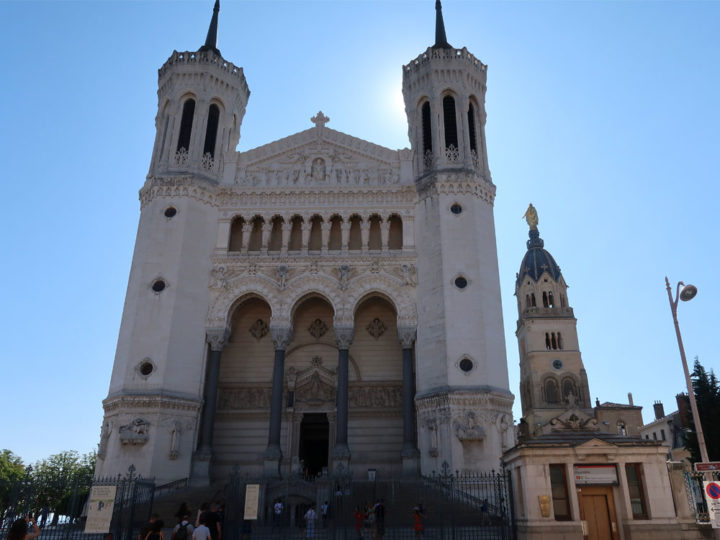
Towards the front, the tower on the left is la Force.
The tower on the right is la Justice.
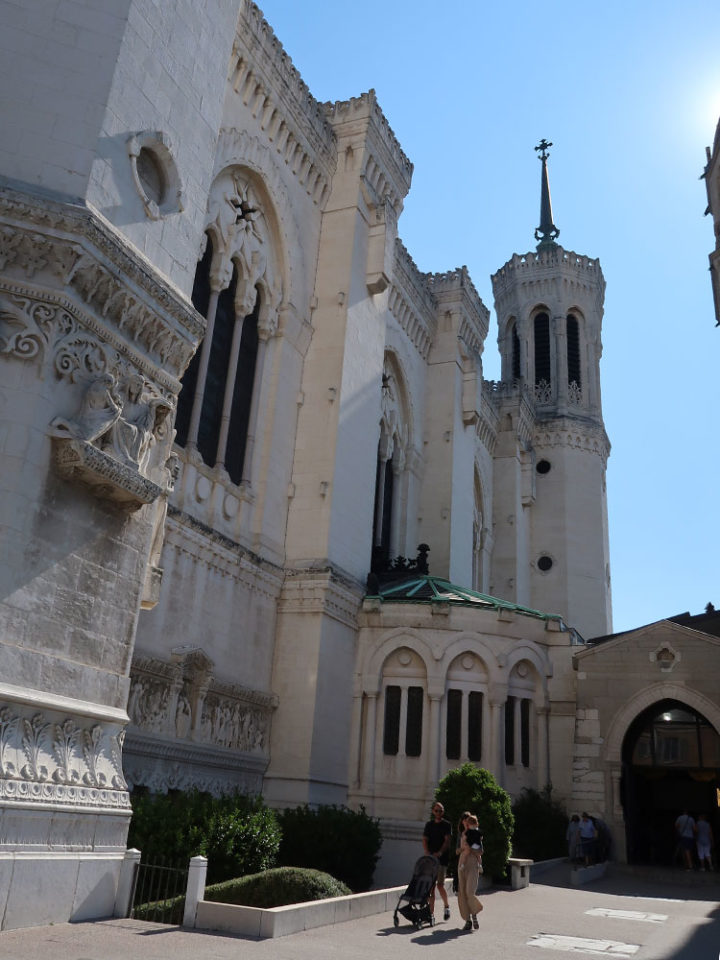
This tower is Tempérance.
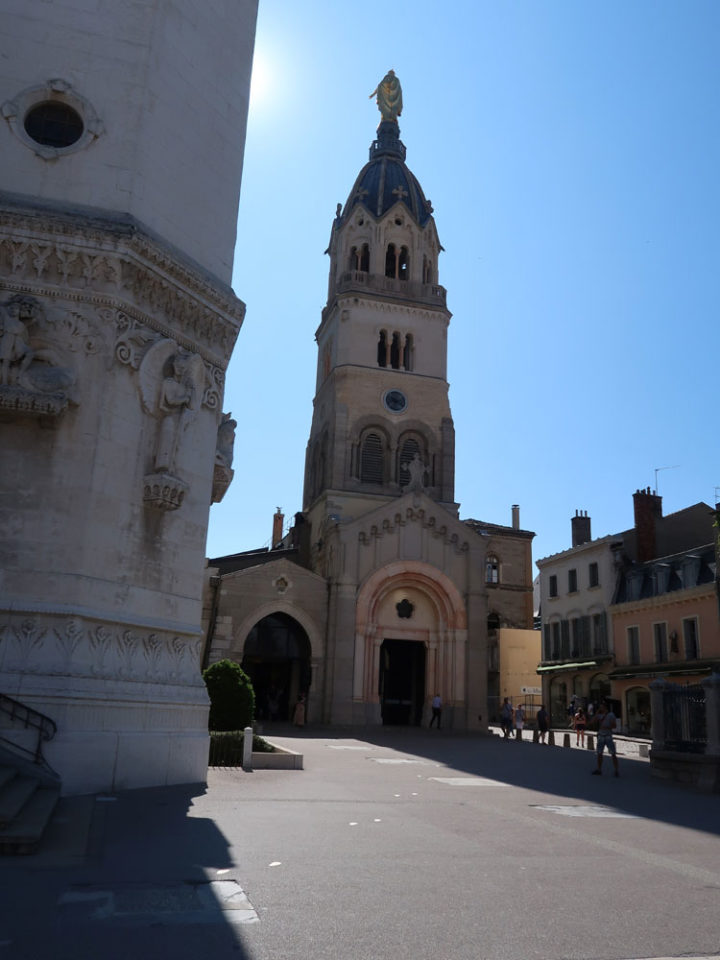
At the far right is LA CHAPELLE DE LA VIERGE (Chapel of Our Lady).
It is a little difficult to see in the photo, but at the top is a golden St Mary’s.
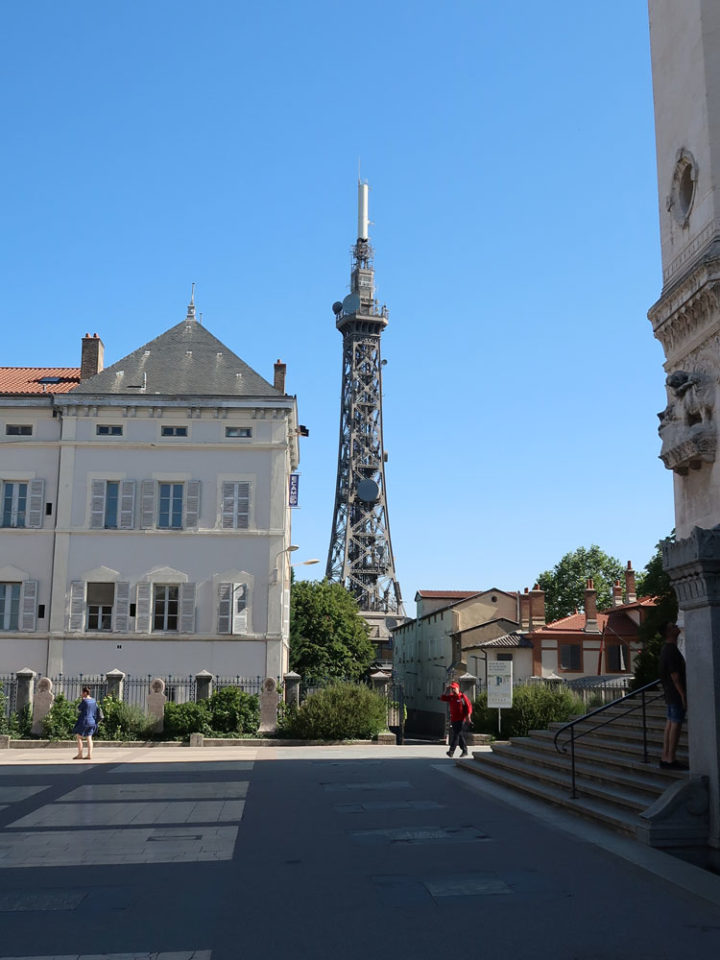
To the left of the cathedral is the Tour métallique de Fourvière (1892-1894).
It is very similar in shape to the Eiffel Tower in Paris.
It used to be possible to climb it, but now it is only used by TV and other relay stations.

A statue of pape Jean Paul II (John Paul II) is erected in front of the cathedral.
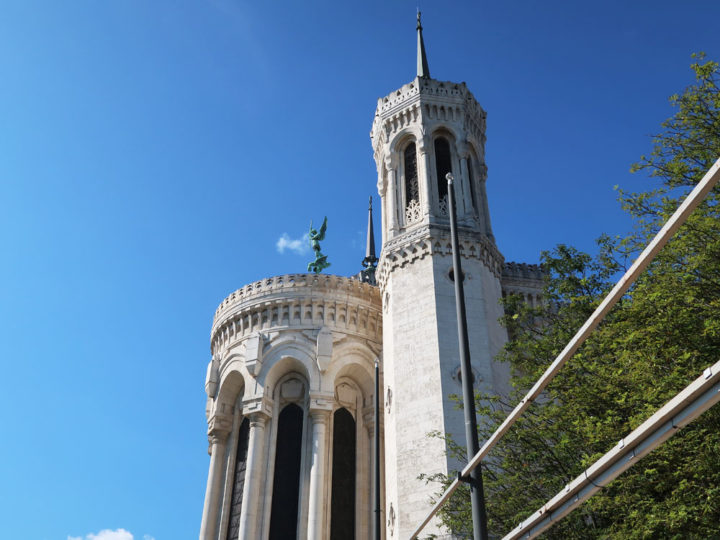
This tower is la Force.
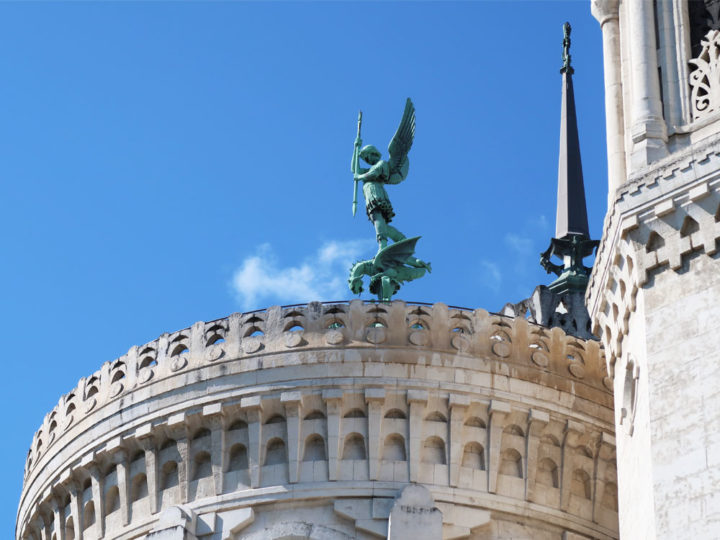
This is a statue of St Michael.
Sculptor Paul-Émile Millefaut (1848-1907), depicting St Michael slaying the dragon.
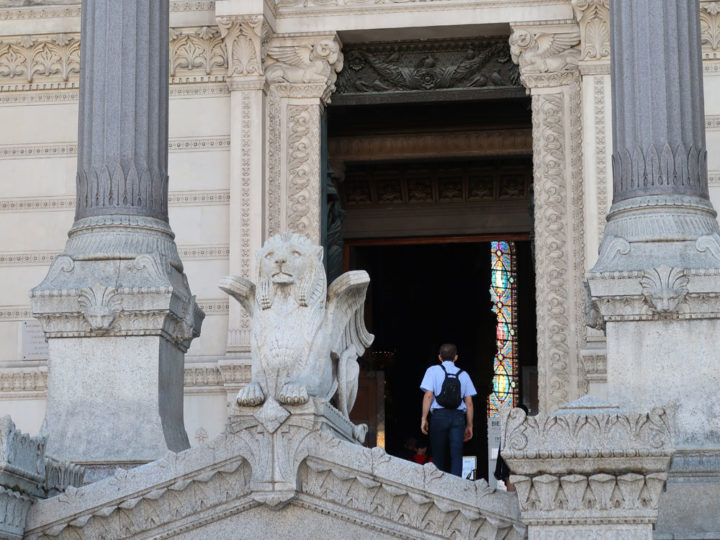
The entrance to the upper church.
The bronze doors were designed by Louis Sainte-Marie-Perrin and the area around the entrance was made to resemble Noah’s Ark.
The lion at the entrance was made by Charles Dufraine (1827-1900).
Interior
The interior of Notre-Dame Cathedral is very special, consisting of two churches, upper and lower.
I have seen many churches in Europe and this style is really rare.
The upper side is very richly made, while the lower side is rather plainly made.
The upper side, in particular, is made with great attention to materials, with white marble from Carrara, pink granite from northern Italy, blue marble from Savoy, green onyx and pieces of silver and gold.
La basilique

The first thing that strikes you when you enter the church is its opulence.
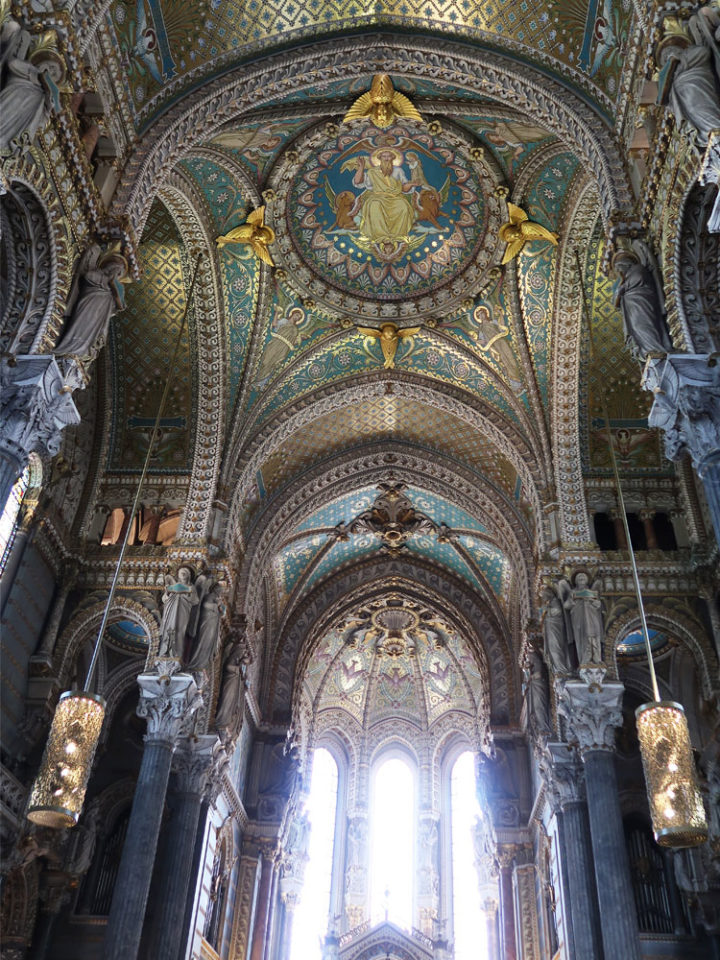
Ceiling painted by Saint-Joseph.
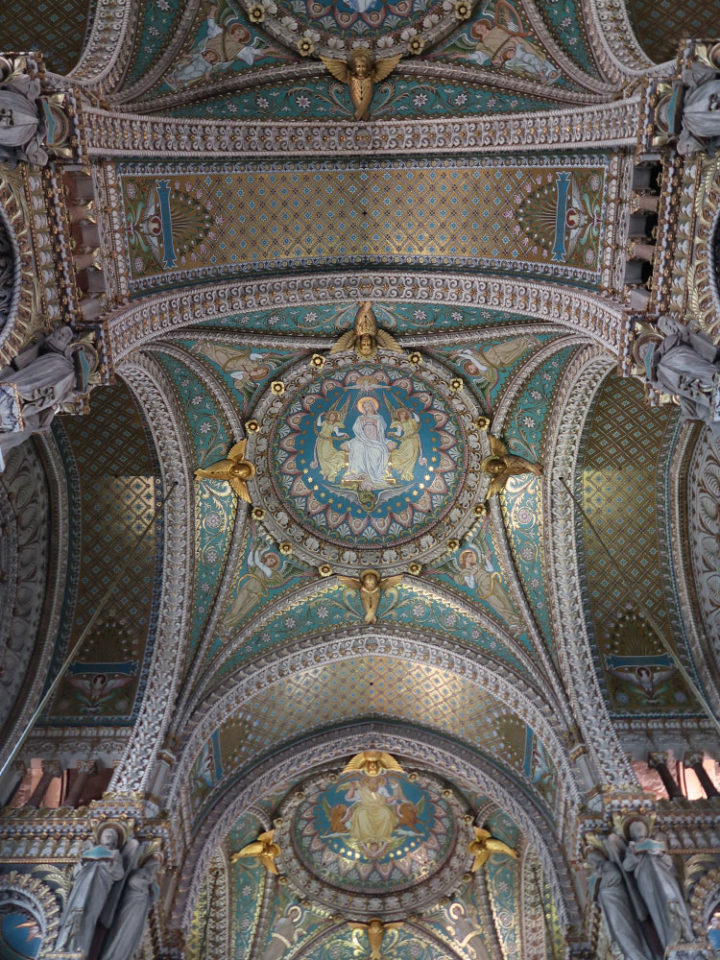
St Mary’s painted on the ceiling.
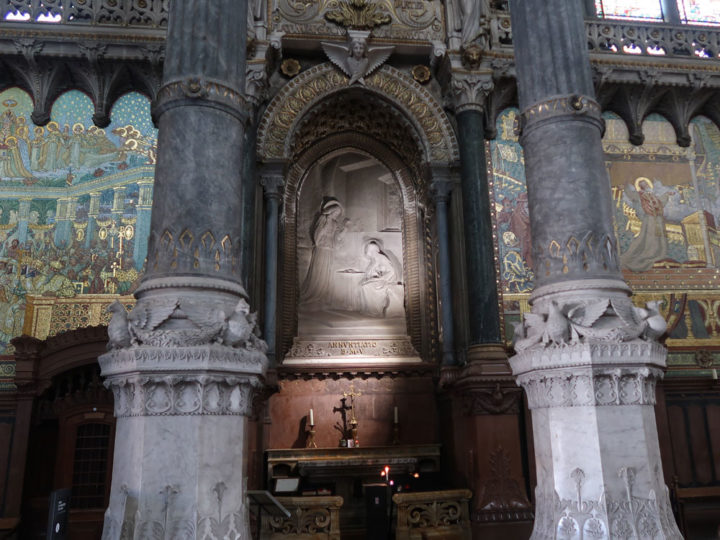
L’Annonciation(Annunciation)
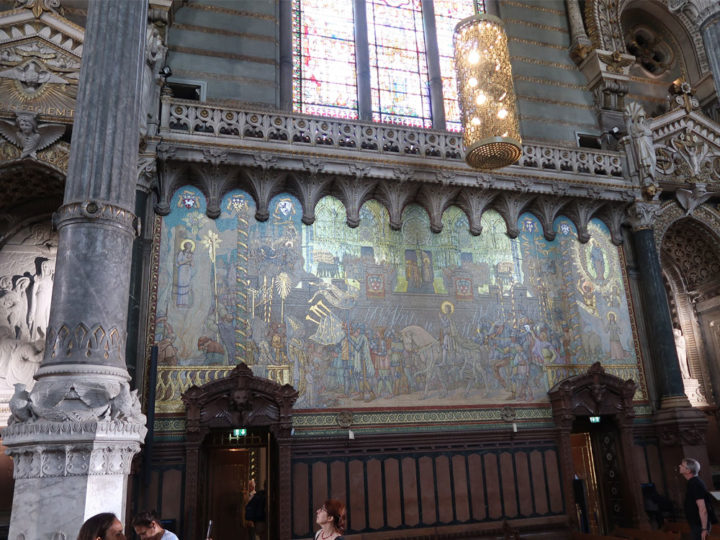
Jeanne d’Arc délivrant Orléans
Six wall mosaics by les ateliers Martin de Paris.
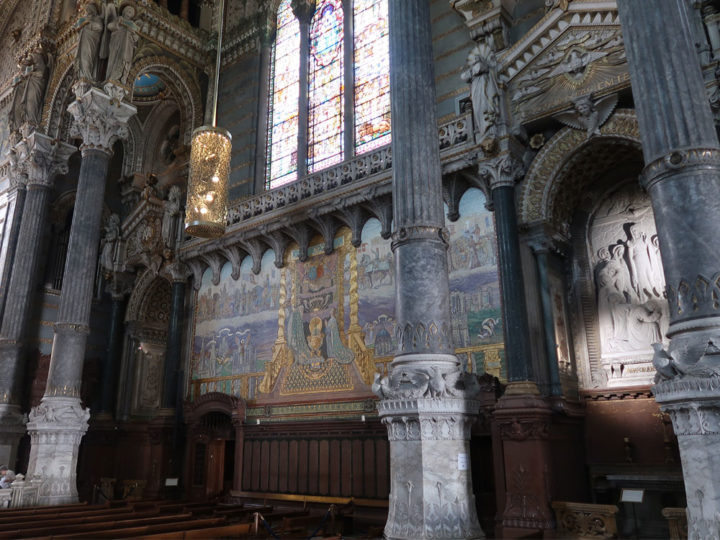
le vœu de Louis XIII (The Wishes of Louis XIII).
Between 1632 and 1638, Louis XIII took a vow to consecrate France to the Virgin Mary if she gave him an heir.
In fact, they have since been blessed with two heirs.
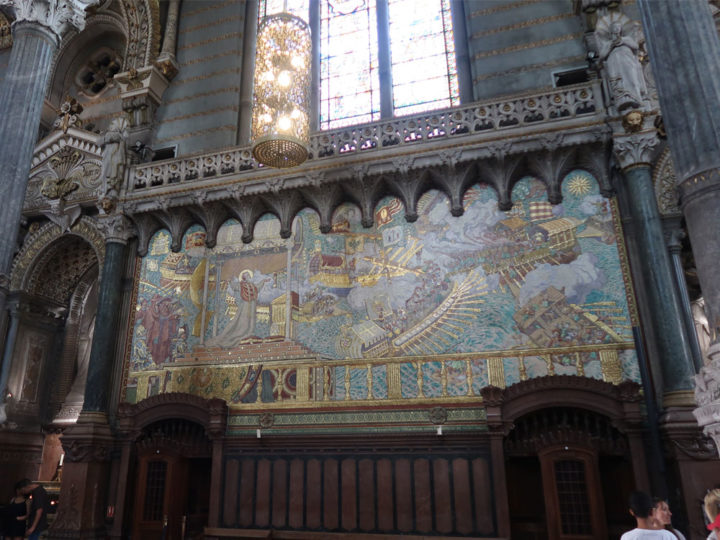
la Bataille de Lépante (The Battle of Lepanto).
It depicts a naval battle in 1571 between the Ottoman Empire and the allied forces of Spain, the Pope and others.
The Allied victories had a profound impact on European history.
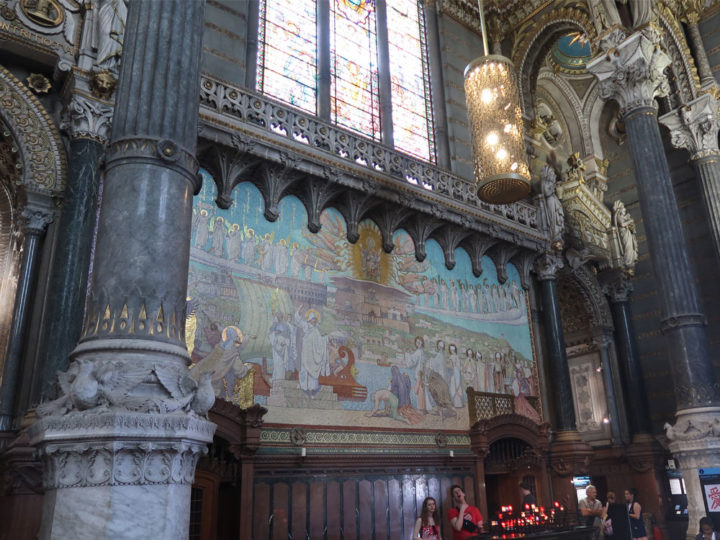
l’arrivée de Saint Pothin à Lyon
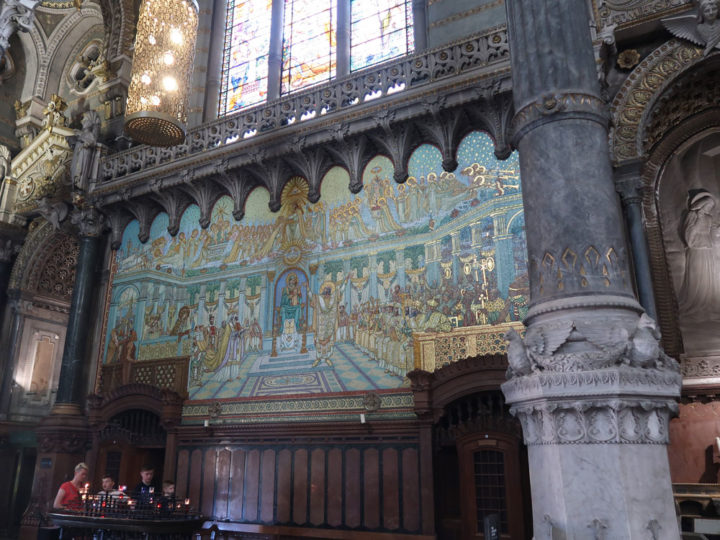
le Concile d’Ephèse (Council of Ephesus).
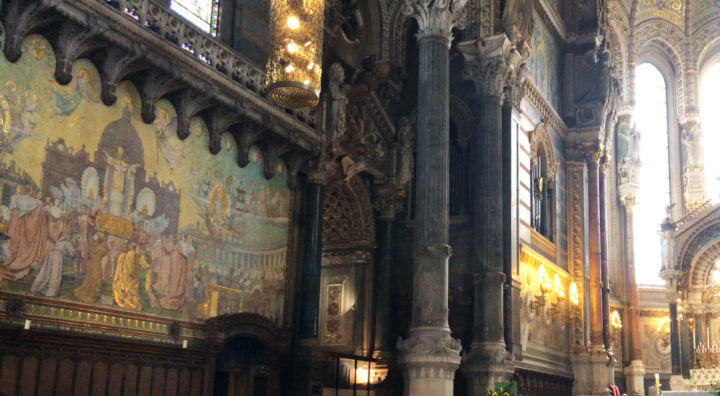
l’Immaculée Conception
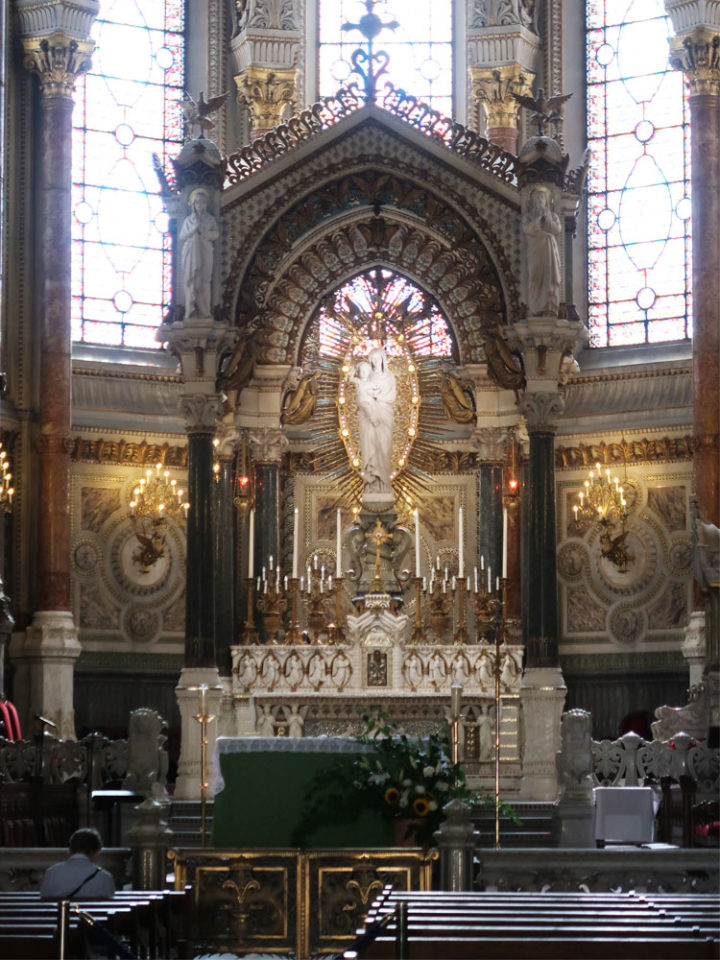
Le Choeur (The Altar) was made by Paul-Émile Millefaut (1848-1907) in 1892.
St Mary’s shows that she will break the bondage of Adam and Eve and deliver them from hell.
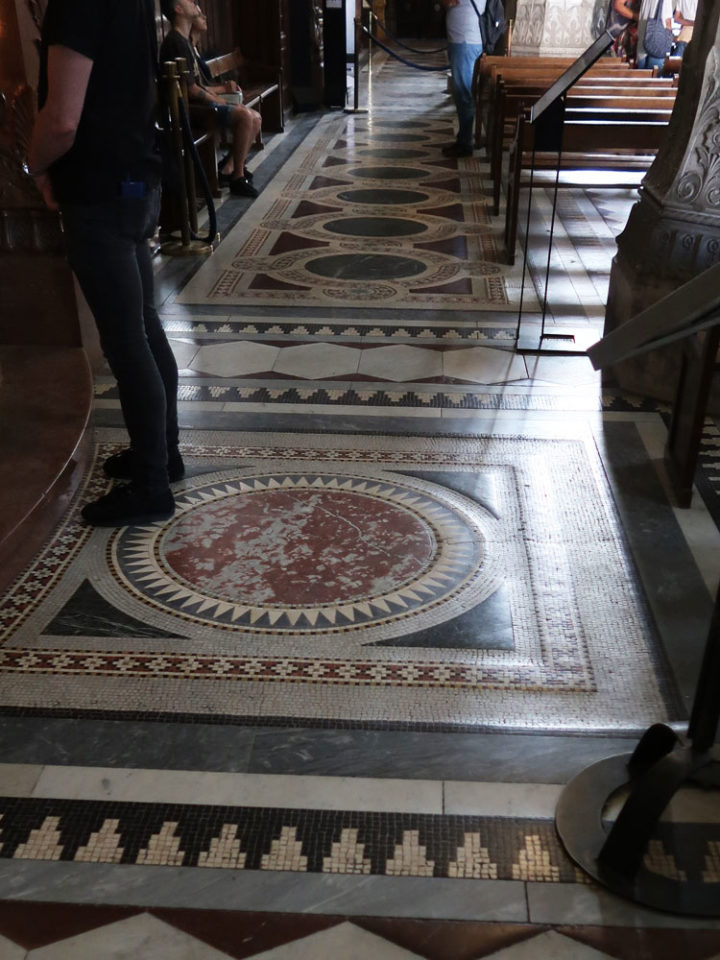
The floors are also very nicely made of various types of marble.
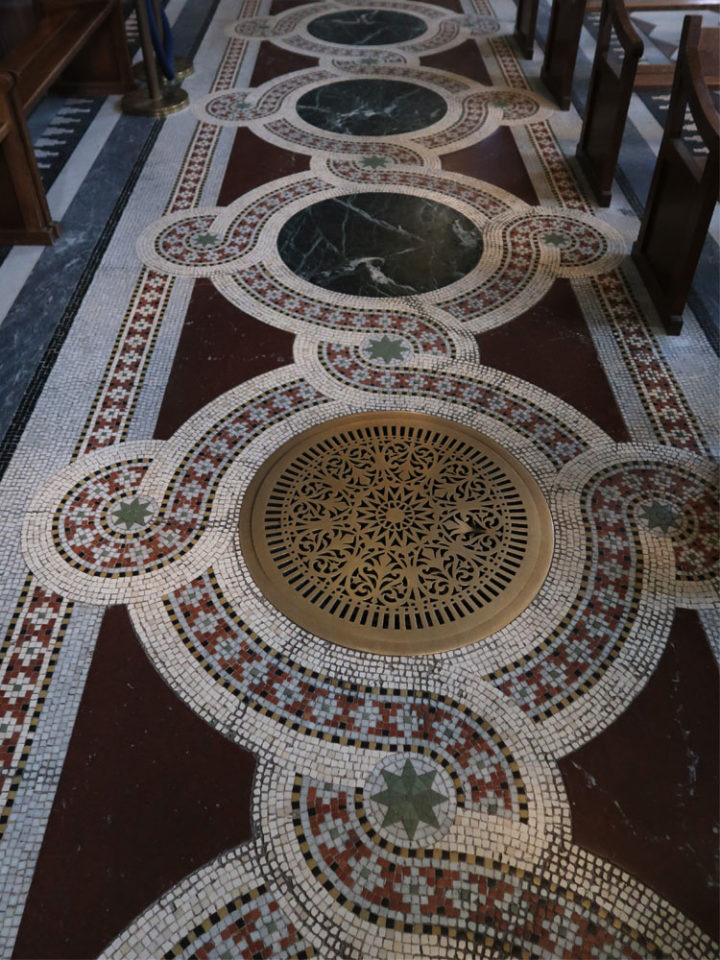
Marble floors designed in geometric patterns.
The ceiling, the walls as well as the floor should be appreciated.
Stained glass
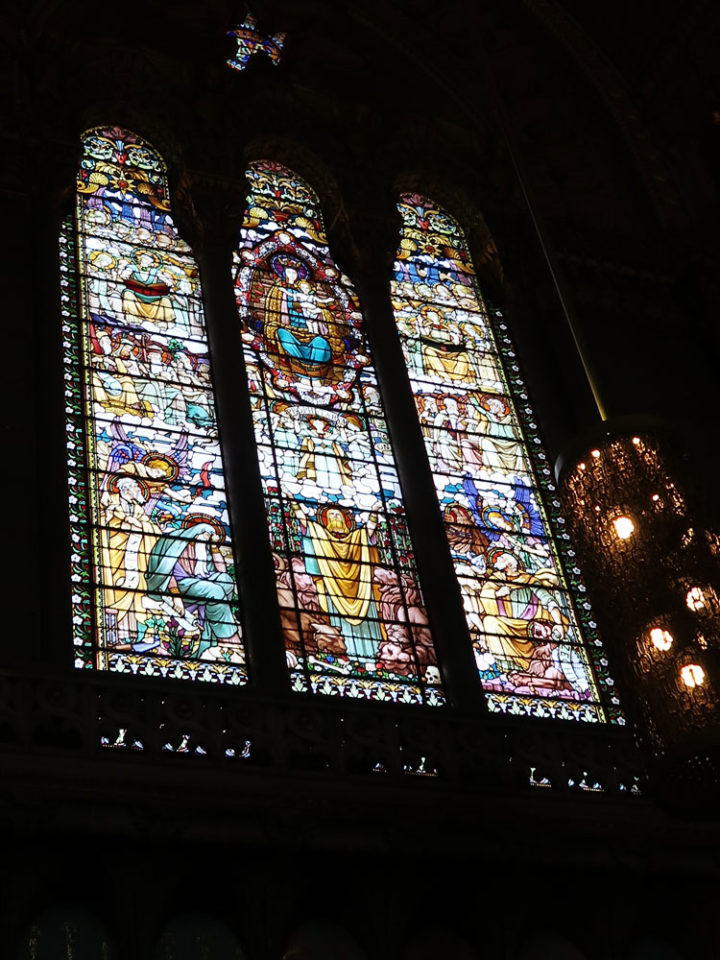
Confesseurs (1898)
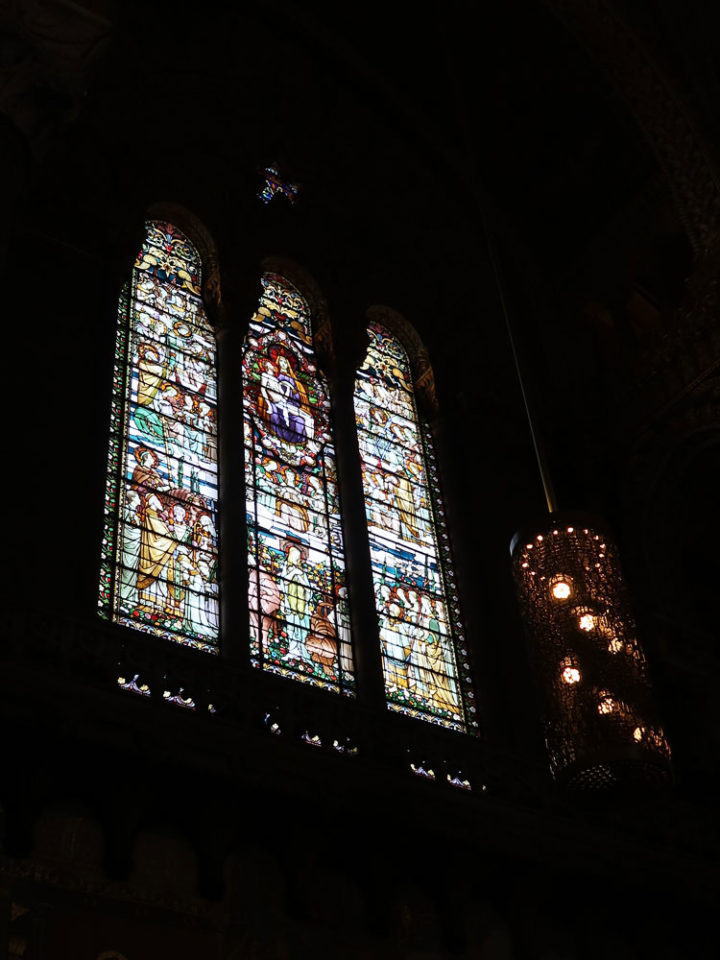
Martyrs (1898)
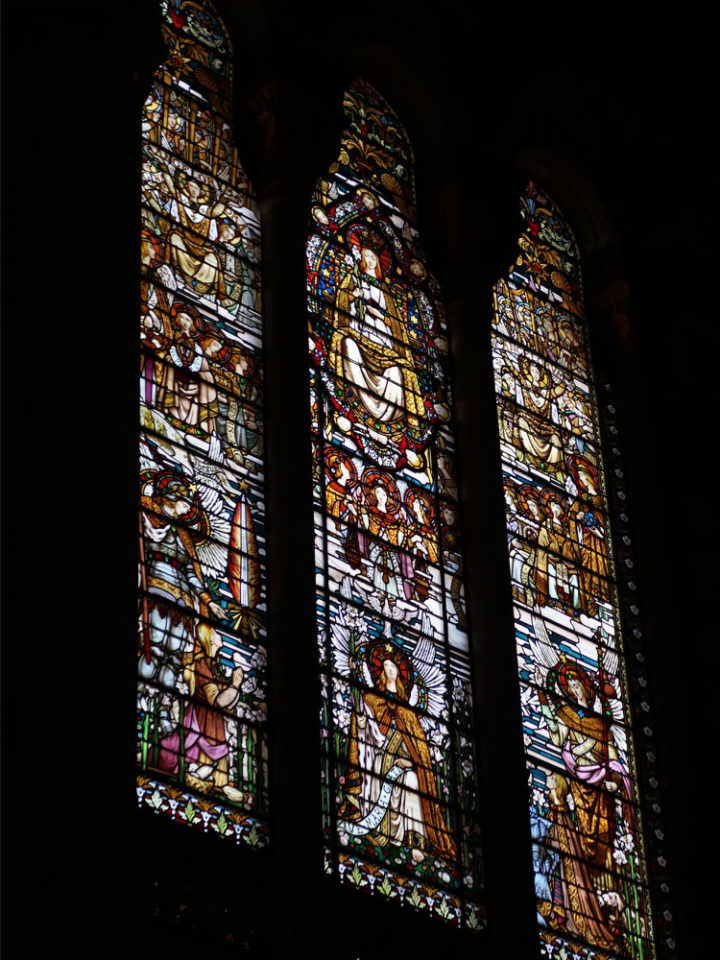
Anges (1904)
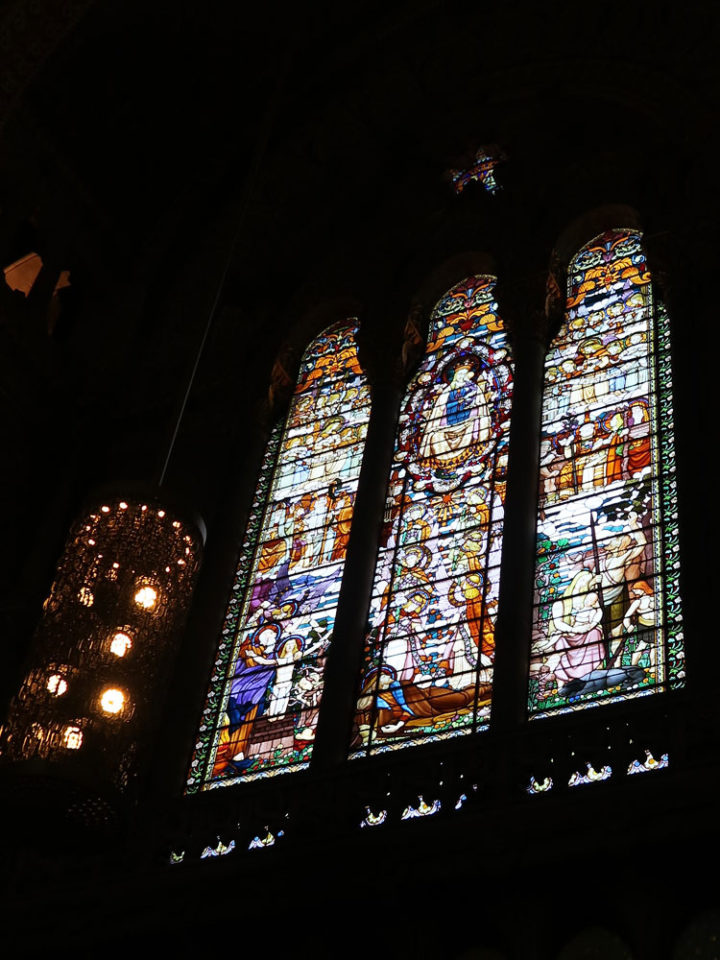
Patriarches (1921)
LA CRYPTE
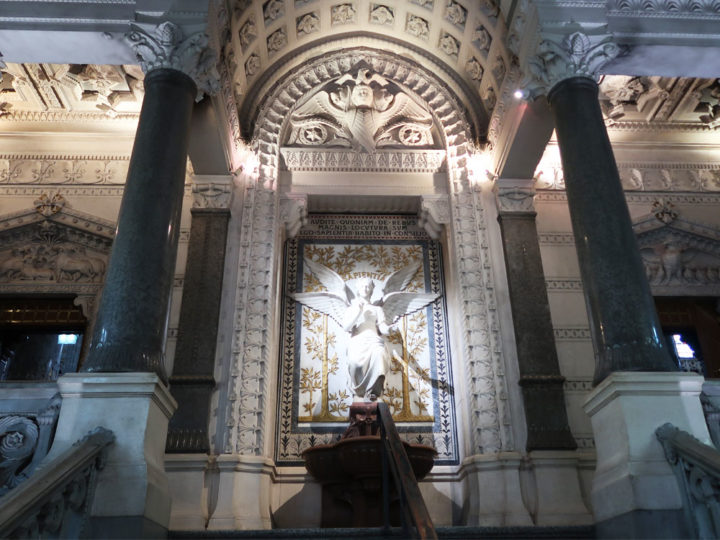
la sagess (1898-1900)
There is a sculpture by Charles Dufraine (1827-1900) on the steps from the upper church to the lower church.
Named la sagess (the wise man), it is said to be his last work.
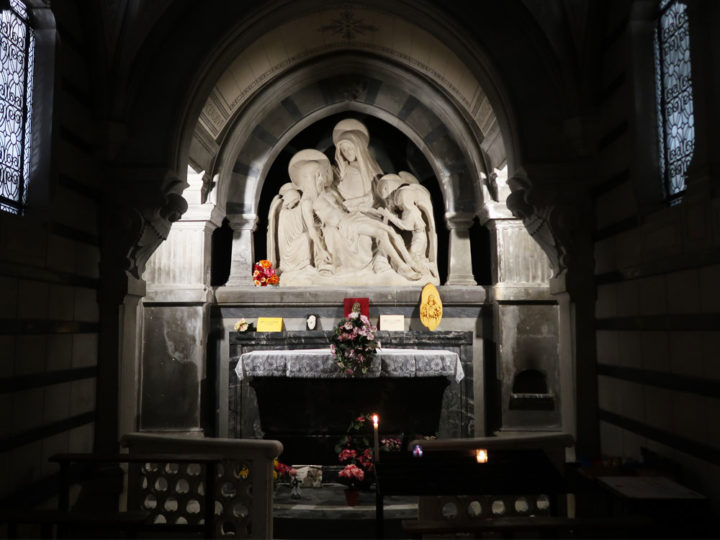
St Mary’s sculpture in the middle of the staircase.
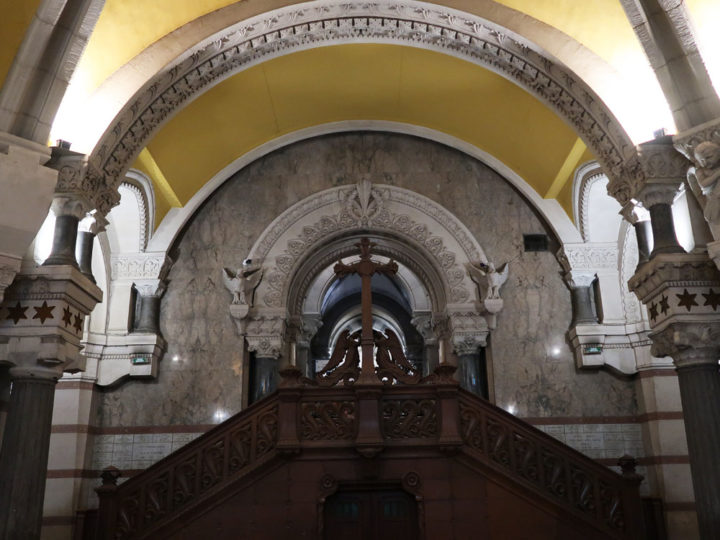
Lower church entrance/exit.
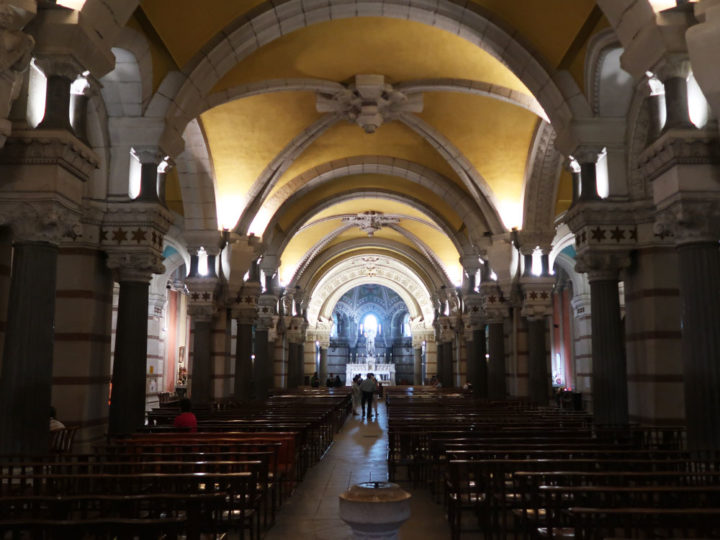
The church was built for Saint Joseph.
It is very quiet, a complete change from the upper church.
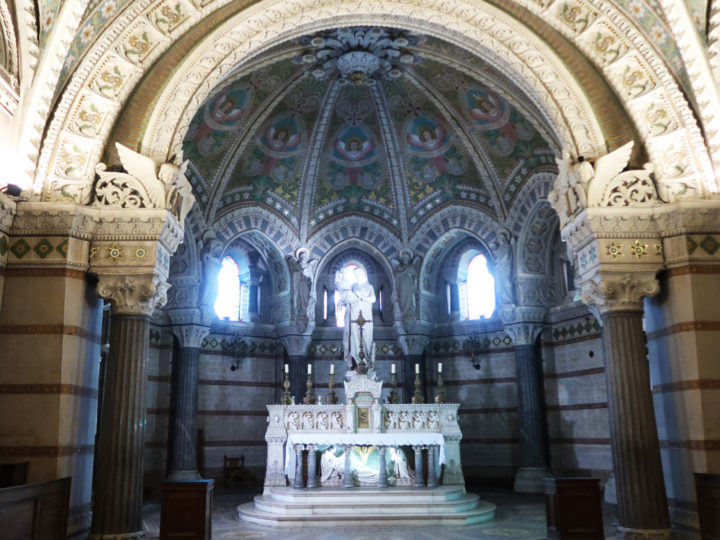
The altar is dedicated to Saint Joseph.
Although not visible in the photo, the floor on which the statue of St Joseph is placed depicts the Seven Deadly Sins.
- acedia
- gula
- luxuria
- superbia
- ira
- invidia
- avaricia
By depicting these ‘seven deadly sins’ at his feet, St Joseph shows that he controls them.
In other words, it is a symbol of the triumph of good over evil.
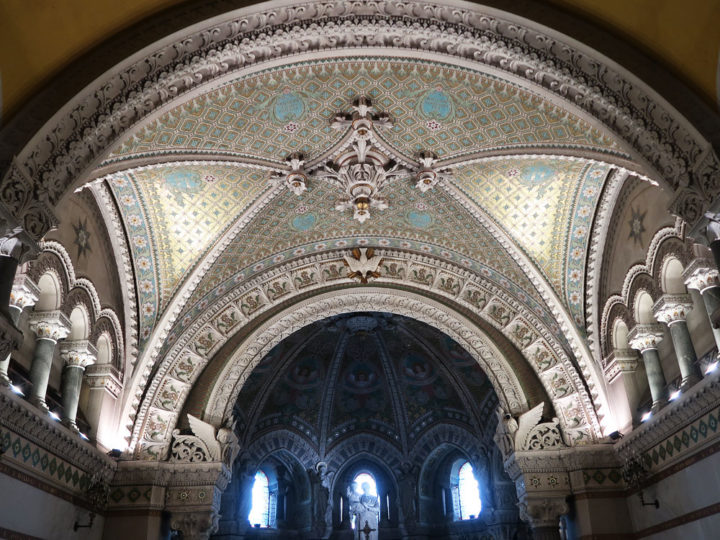
The ceiling, which is divided into four sections, has an upper church atmosphere.
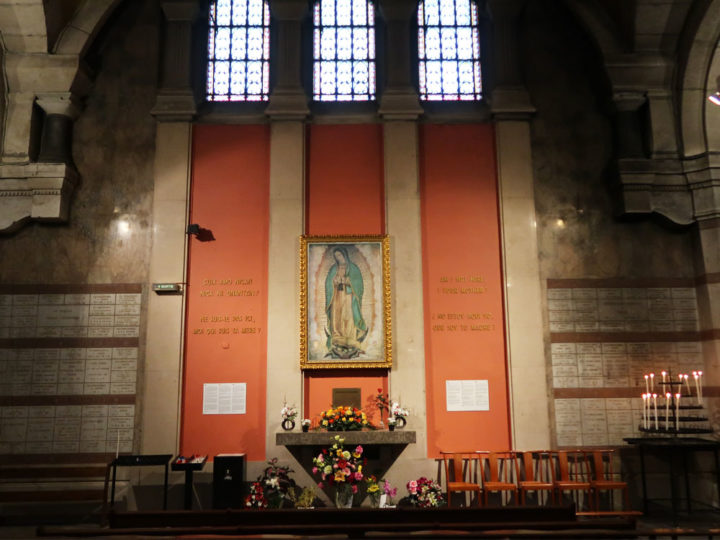
Notre-Dame de Guadalupe
On display since 2014.
Our Lady of Guadalupe is the Virgin who appeared in Guadalupe, Mexico, in 1531.
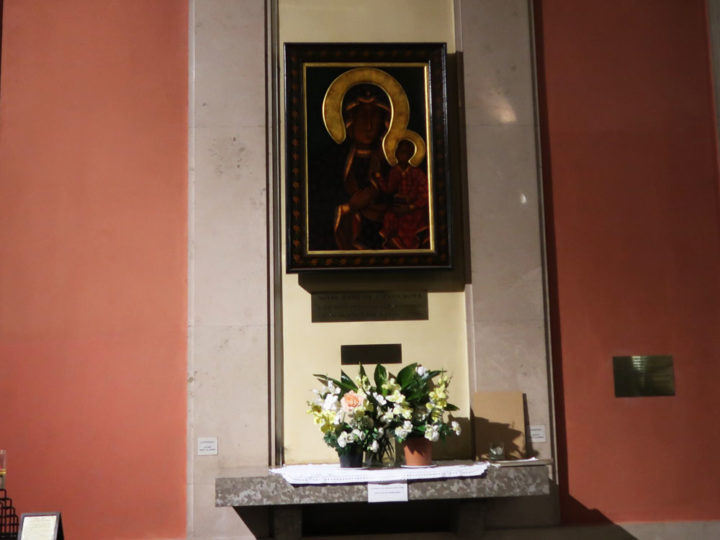
Notre-Dame de czestochowa
On display since 2002.
It was brought from Jerusalem in 1832 and enshrined in the Yasna Gula Monastery.
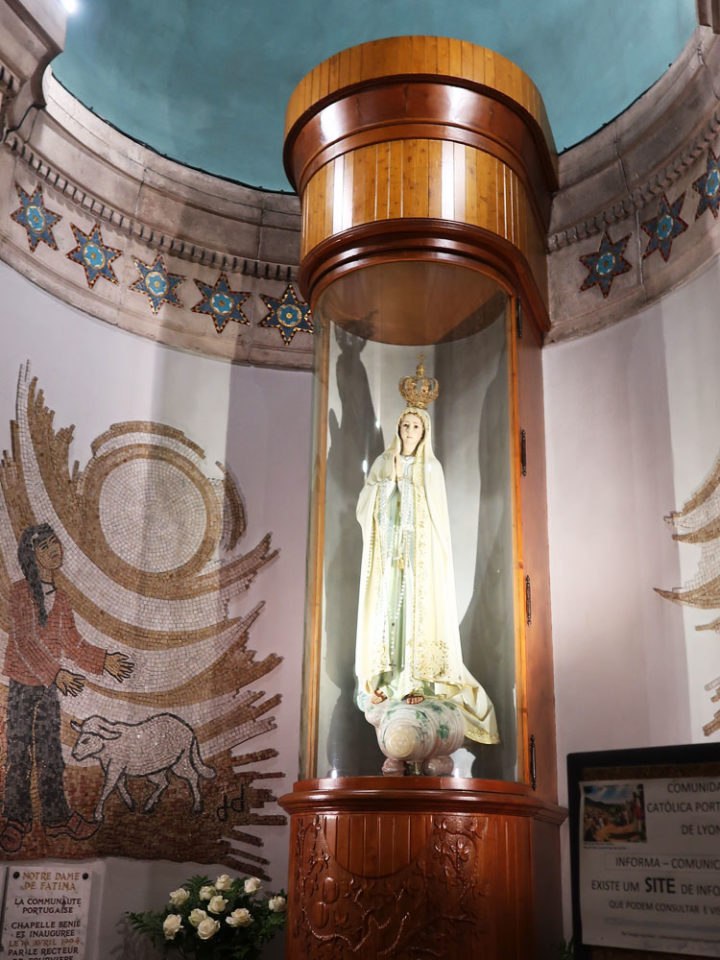
Notre dame de Fatima
In 1916, Our Lady appeared to the three children.
It is said to have conveyed various messages.
The Fatima Third Prophecy is a well-known story.
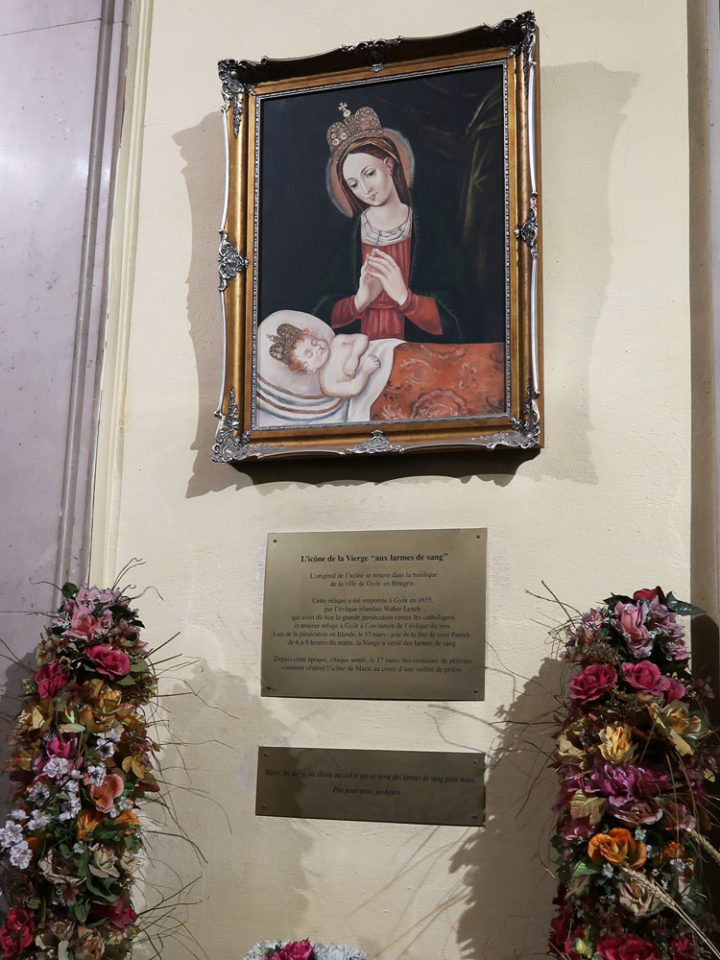
The Irish Madonna of Gyor
In 1697, the Virgin is said to have shed tears of blood for three hours.
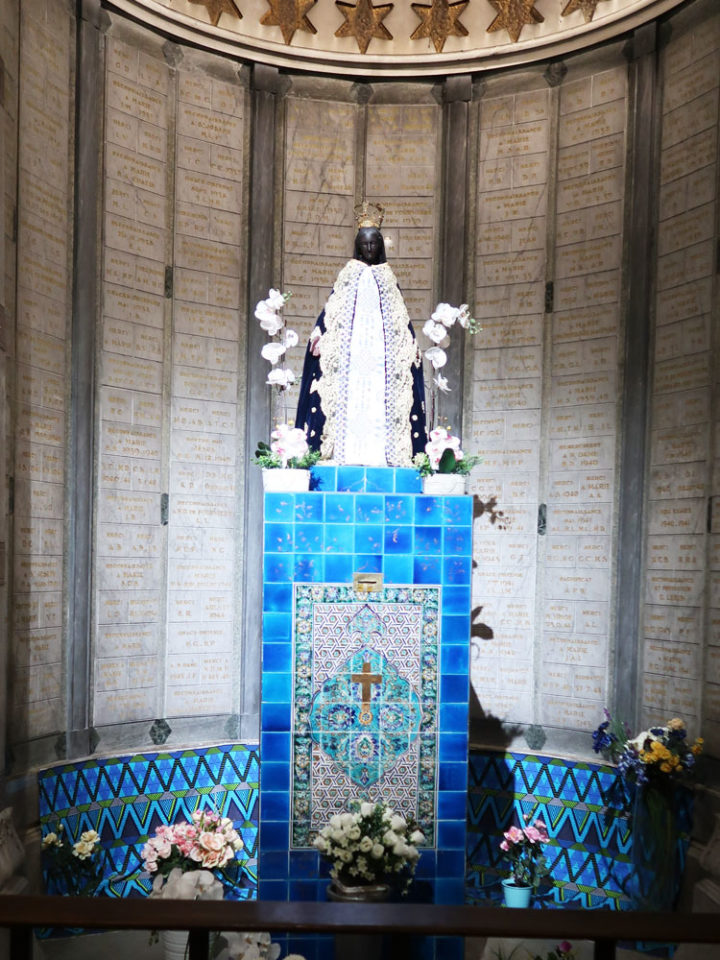
Notre dame d’Afrique
Dedicated to the cathedral in Algiers, Africa, 1872.
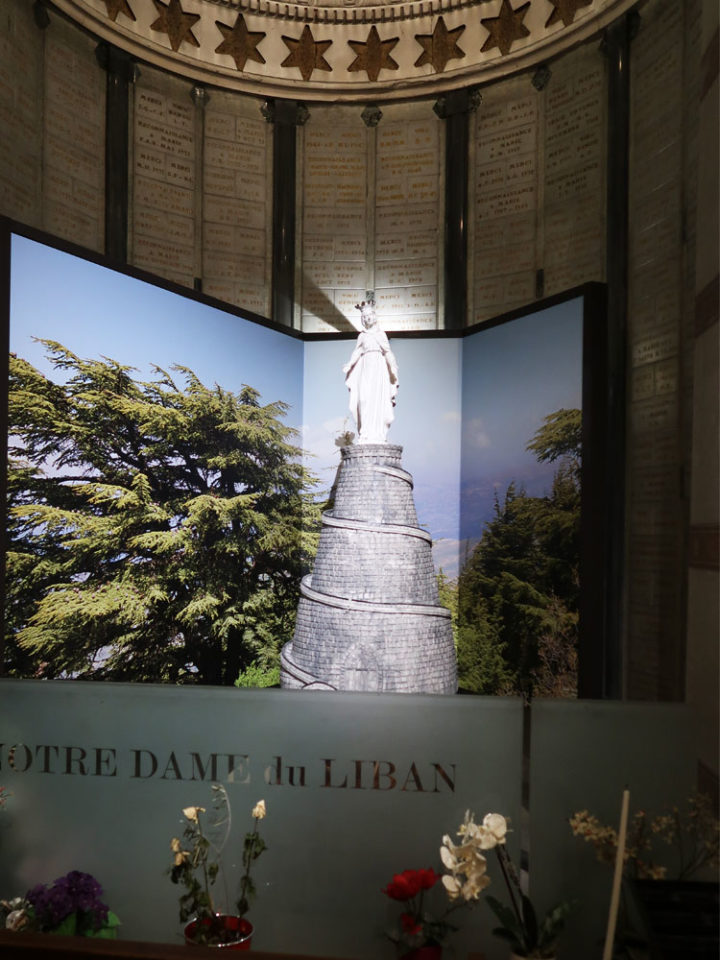
Notre dame du Liban
This giant 15-tonne bronze statue was founded in 1904.
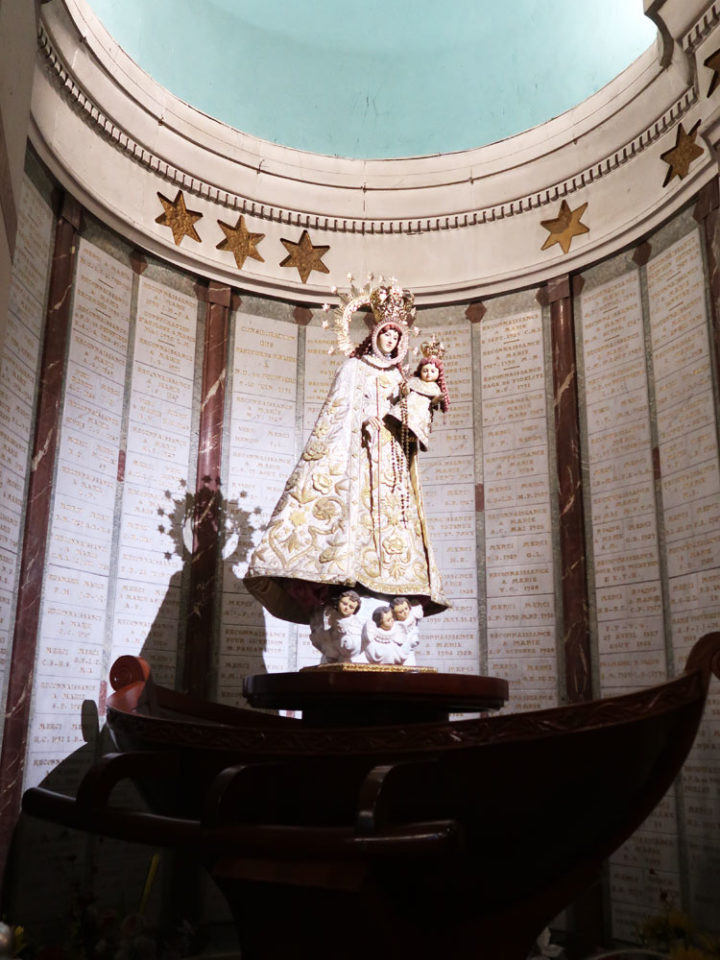
Notre dame de la Naval
It is said that in 1646, when the Dutch army attacked the city, the victory was won by praying to the Virgin.
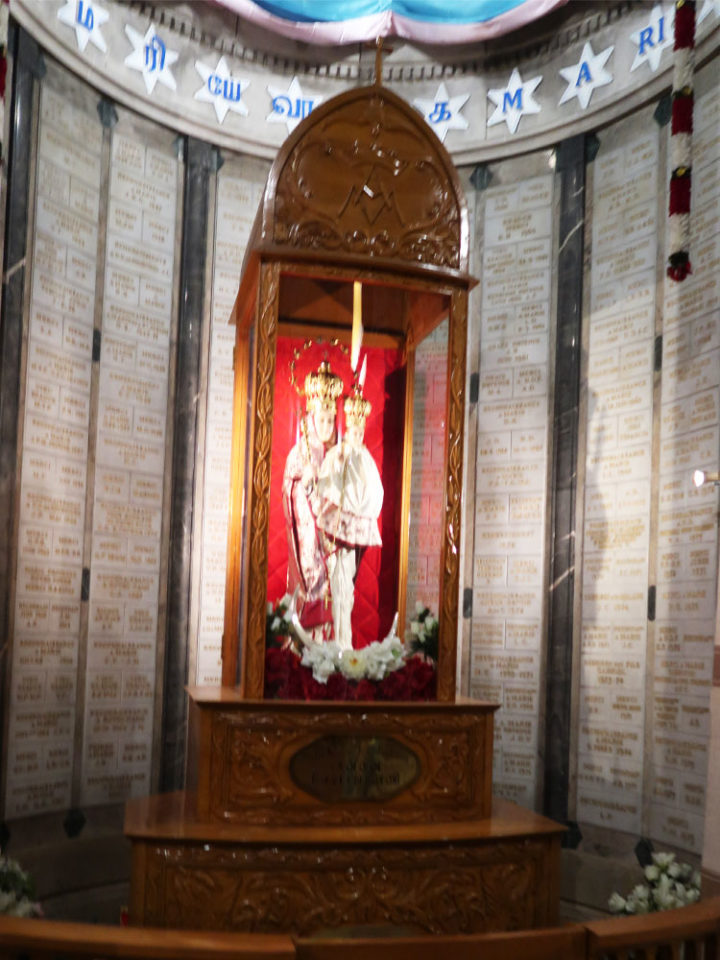
Notre dame de velankanni
Our Lady of the Virgin, who was manifested in Bellankani, India.
It appeared twice in the 16th century and, in the 17th century, is said to have rescued Portuguese sailors.
View from Fourvières Hill.
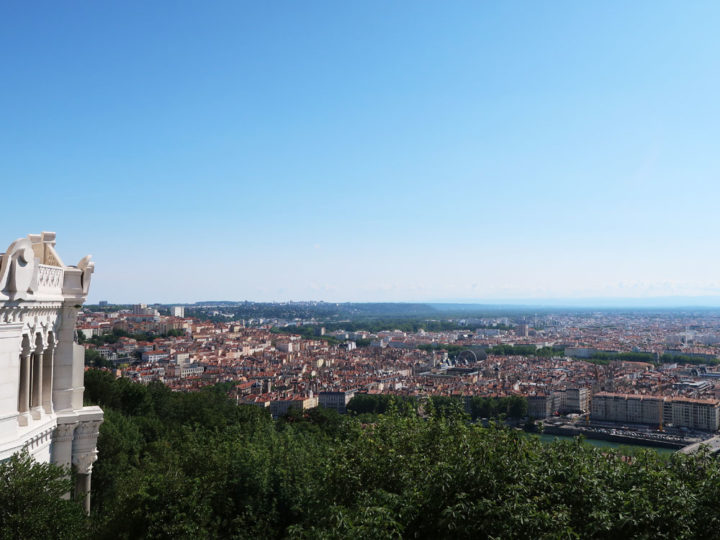
The views from Fourvières Hill are very spectacular.
It offers a panoramic view of the city of Lyon.
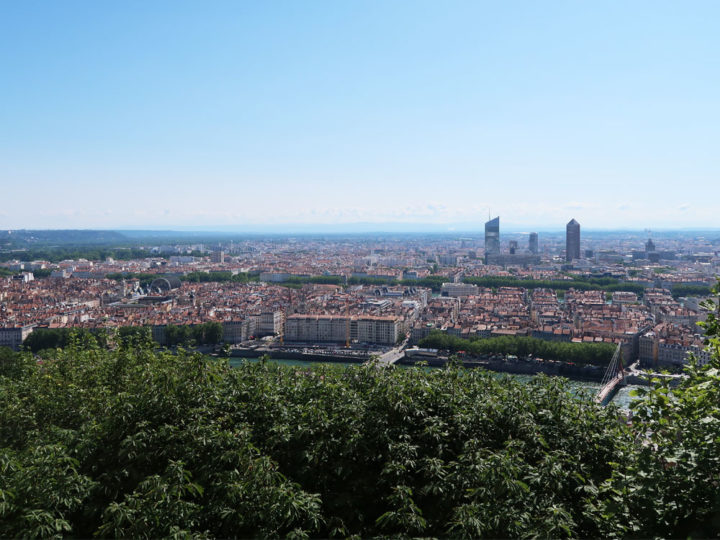
It can be seen from the right, but the space is larger and easier to see from the left.
Summary
The order in which the churches are introduced this time is from the upper church to the lower church, but Pierre Bossan’s intention seems to be that the correct route is from the lower church to the upper church.
I myself ended up visiting from the upper church, but I would recommend that future visitors visit from the lower church to the upper church.
Thank you again for reading to the end of this issue.
For more information on day trips from Paris to Lyon, please click here.

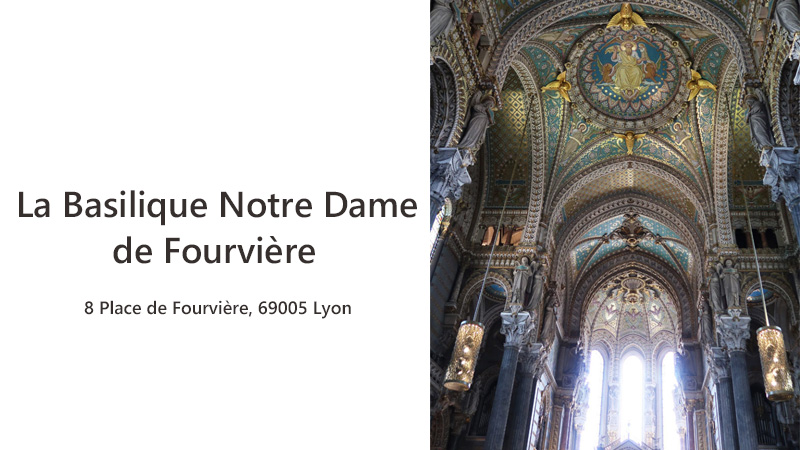



コメント